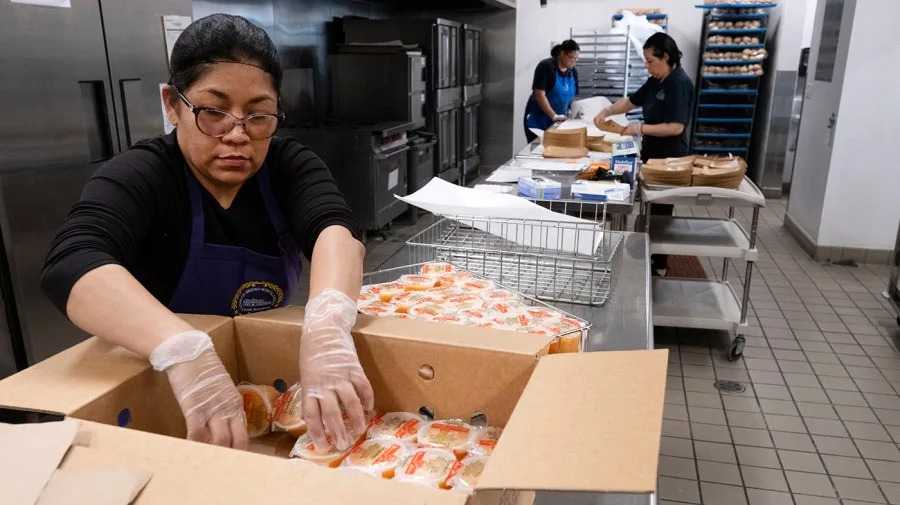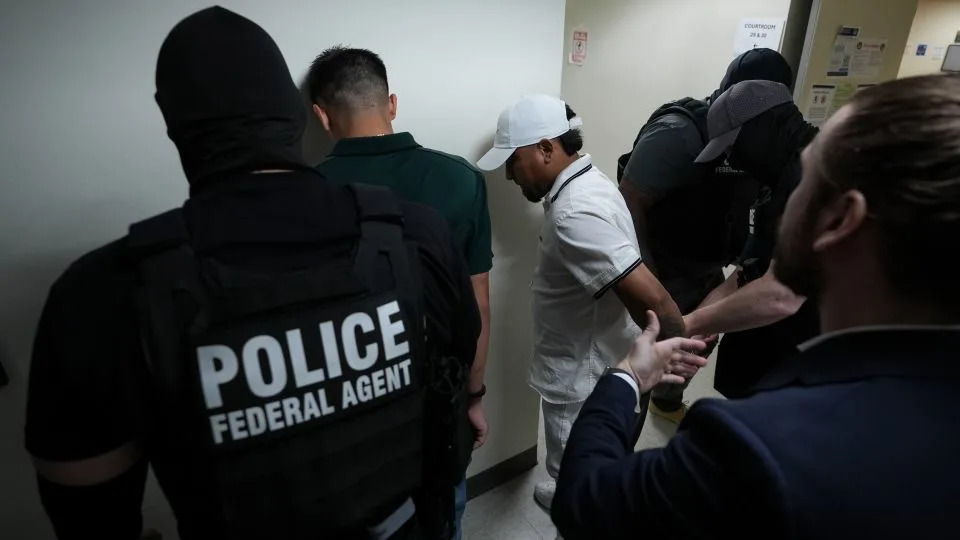President Donald Trump’s Monday press conference painted a gruesome picture of a crime-ridden Washington, D.C., as he ordered the National Guard deployed in the city and laid out his plans to “rescue our nation’s capitol from crime, bloodshed, bedlam and squalor.”
But official data gives us a much different picture. Crime in D.C. has fallen steadily since peaking in 2023, with murder down 34% so far this year compared with the same time frame in 2023. Moreover, D.C.’s violent crime rate in 2024 was the second-lowest rate reported to the FBI since 1966.
Taking murder rates alone, we’ve seen impressive improvement across our nation, beyond Washington, D.C. The FBI released data on crime in the United States in 2024 last week, showing a nearly 15% drop in murder overall from 2023 to 2024. This exceeded a 10% drop in 2023 and put the nation’s murder rate in 2024 below pre-pandemic levels. The preliminary data for 2025 shows an even more promising decline is happening this year.
The FBI’s data contradicts Trump’s oft-cited comments on last year’s campaign trail that crime was rising in the United States. Those comments likely contributed to a remarkable partisan split in whether Americans believed crime was rising.
Beyond D.C., Los Angeles reported the fewest murders through June since 1966. New York City has recorded fewer murders through June since 1960. Philadelphia recorded the fewest murders seen in the city since 1969, Baltimore since 1965, Detroit since 1964, and San Francisco had the fewest ever recorded (monthly data available to 1960).
Experts aren’t sure why murder is falling. And answers do not easily fit on the typical left-right U.S. political spectrum. Murder falling nearly everywhere suggests the main drivers are national, rather than local, in scope. Notably, the rate is also falling despite most medium and large police departments having far fewer officers now than they did a few years ago with clearance rates that generally remain low.
It’s falling despite no solutions to the root causes of crime, like poverty and a country still awash in guns. And it doesn’t reflect a recent change in national immigration policy; the decline began in 2023, so the main drivers likely began to take shape when immigration was at its peak.
So what could be driving the enormous drop in the number of murders? When trying to account for all of the factors, the most compelling explanation to me, as someone who works in crime data, could be most eloquently summed up as “we spent a lot of money on a lot of stuff.” For example, local and state government construction surged in the wake of the American Rescue Plan and Inflation Reduction Act.
Federal support for communities enabled local government hiring, which cratered in the wake of the Covid pandemic, to quickly recover. Public construction increased by 40% between 2021 and 2024, including massive investments in highways and streets and public safety construction. Additionally, data from the Bureau of Transportation Statistics points to enormous increases in public construction on lighting and neighborhood centers in the wake of the pandemic.
It’s well supported in the criminal justice literature that municipal improvements like street lighting are linked to a reduction in violent crime. New neighborhood centers, for example, have been shown to help deter crime by bringing people together physically in ways not feasible during the pandemic.
Public construction was bolstered by large increases in Department of Justice spending on community grants that increased by more than 1 billion dollars between 2021 and 2023. This included nearly $90 million per year invested in new grants supporting the DOJ’s Community Based Violence Intervention and Prevention Initiative in more than 90 cities nationwide.
Nowhere are the fruits of these investments more clearly seen than in New Orleans, my home city, where I served for years as a crime analyst.
In 2022, New Orleans had the nation’s highest murder rate. The city’s police department shrank by 250 fewer officers after the pandemic, while response times skyrocketed. The city’s murder count was cut in half by the end of 2024 and New Orleans recorded the fewest murders through June since 1970, in spite of the terrorist attack on Jan. 1 on Bourbon Street.
How they got there is likely instructive for understanding how murder is falling in many places.
The city spent nearly half of its American Rescue Plan Act allotment on replacing lost revenue caused by the pandemic and stabilizing the city’s budget. A stable city budget and money from the federal and state governments enabled local street construction to surge by 180% between 2020 and 2024, helped along by new infrastructure construction related to the city’s hosting of this year’s Super Bowl.
A transformative 2023 grant from the Department of Justice enabled the city to launch a pilot "violence interrupter" program. Through this program, violence interrupters mediate conflicts in the community and in hospitals — often directly following shootings — to prevent conflicts from further escalating. Following a successful pilot, this program was supplemented with a considerable investment from the city for its expansion. According to the city’s Health Department, the DOJ’s initial $2 million directly led to the city spending nearly $6 million more on violence reduction programs.
Other areas of the community and the criminal justice system have launched programs in the last few years as well. The Orleans Parish District Attorney’s Office launched an extensive place-based violence reduction program called N.O.D.I.C.E., which uses a technique called Risk Terrain Modeling to identify “vulnerable areas” and deliver resources. From a traditional law enforcement standpoint, NOPD launched a joint task force with various federal entities while the state police deployed a task force of roughly 20 officers starting in mid-2024. Finally, an alliance of 600 local organizations has raised over $11 million to provide grants to groups serving local youth.
Criminologists still aren’t sure why murder fell so precipitously in the 1990s, so we don’t know precisely which of these steps taken in New Orleans have been most important in driving down gun violence and other crimes. But the cumulative effect is as obvious as it is miraculous.
Other cities have tried other strategies and a survey of 100 cities with declining murder might find 100 different approaches. The commonalities, however, are healthy post-pandemic city budgets and federal spending spurring increased government construction, hiring and programming at the state and local level.
Crime trends usually change for complex reasons, and we may never know for sure why murder has plunged in the last two and a half years. But intensive investment in communities like New Orleans in the wake of the pandemic — spurring construction, economic stability and innovative municipal programming — stands out as a strong explanation for much of the decline.
Crime is currently falling in the United States and the nation’s murder rate this year may be the lowest ever recorded. One can rightly argue that violent crime in D.C. and elsewhere is still far too common, but decrying a crisis of rampant violent crime and murder and calling in military forces to quell it will not solve the problem.
The most promising results we’ve seen in driving down these rates are not from cracking down on crime with aggressive force. They’ve come, and should come, from strong community investment and intervention strategies matched with smart, targeted enforcement.
This article was originally published on MSNBC.com






Comments